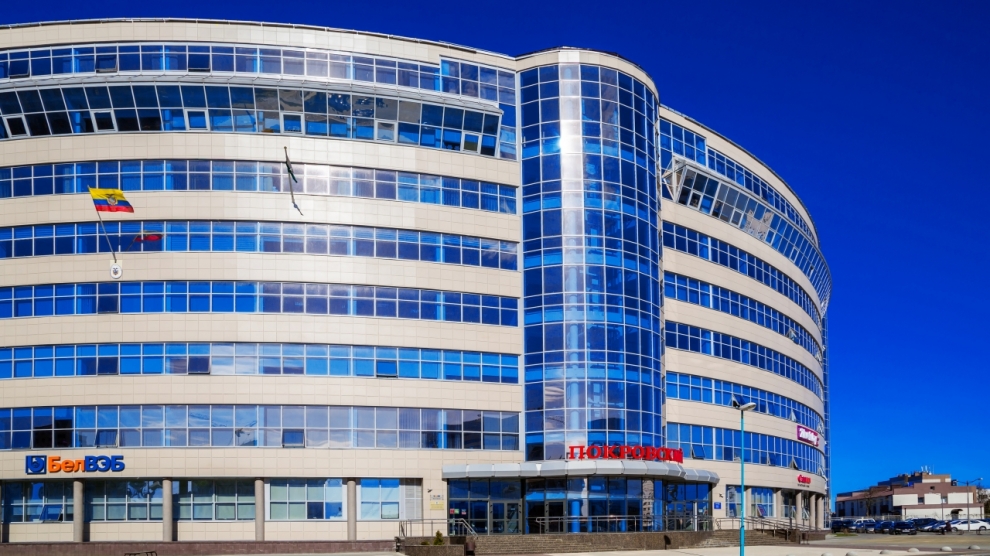The World Bank has said that the cyclical economic recovery in Belarus has continued, led by growth in consumption and exports. Stronger domestic demand and increased exports have helped GDP growth accelerate over six straight quarters to 3.9 per cent by the second quarter of 2018. Real wages rose, outpacing productivity growth throughout the second half of 2017 and during 2018, fueling household consumption, which grew by 10.2 per cent year-on-year in the second quarter of 2018. The data was published last week in the bank’s latest Belarus Economic Update.
Rapid increases in capital spending by local governments (during 2017-18), and in bank lending, reinvigorated investment, which expanded by seven per cent in the second quarter of 2018. As a result, the contribution of domestic demand to GDP growth exceeded that of net exports, which turned negative due to an increase in imports.
On the supply side, growth was driven by a rebound in commodity-intensive industries. More favorable terms of trade with non-CIS countries helped exporters of mineral products, metals and wood to increase both volumes and revenues. In contrast, a mild and volatile recovery in Russia created limited opportunities for increasing exports of manufacturing and agricultural products.
Also, bilateral import restrictions periodically imposed by Russia adversely affected the exporters of dairy products. Meanwhile, financials of the corporate sector continued to deteriorate. In the first half of 2018, profits in manufacturing and construction fell in real terms, while the number of loss-making State-Owned Enterprises (SOEs) in these sectors decreased only marginally.
Nonetheless, commercial banks increased lending to corporates in manufacturing, at a pace close to sectoral output growth, despite high indebtedness levels in 2017 (the ratio of assets subject to credit risk to gross sectoral value added amounted to 69.4 per cent) and a higher share of assets subject to credit risk, at 22.6 per cent, compared to other key sectors of the economy.
Consolidated government revenues recorded real growth due to robust tax revenues. To meet rising (by 2.4 per cent in real terms in the first half of 2018) public debt payments, spending on public investment and transfers to local budgets were reduced, to generate a headline fiscal surplus of 5.5 percent of GDP (net of quasi-fiscal expenditures). However, public debt pressures remain, as the public debt to GDP ratio amounted to 36.8 per cent by the second quarter of 2018. If an extended definition of external public debt is applied, the public debt to GDP ratio reaches 51.2 per cent.
To maintain single-digit inflation, the National Bank of Belarus continued monetary targeting. Annual average inflation slowed to 6 percent in 2017, and further to 5.6 per cent by September 2018, although accelerating from 4.7 per cent by the first half of 2018. As inflation pressures stabilized, the benchmark interest rate was steadily cut during 2017-2018, from 17 to 10 per cent by June 2018. As a result, lending rates fell, improving loan supply conditions and stimulating bank lending, which grew by about 11.5 per cent in nominal year-on-year terms by mid-2018.
The country’s degree of dollarisation remained high, with 67.2 per cent of deposits denominated in foreign currency, while the share of the currency component of broad money went down, from almost 66 per cent to 62 per cent by the second quarter of 2018. However, the economy-wide ‘problem asset’ level at 13 per cent (as of April 1, 2018) remains a concern.
The current account deficit narrowed substantially in 2017 before rising again in 2018. It fell to 1.7 per cent of GDP from around 3 percent in 2015-2016, as more favorable terms of trade contributed to a growing value of goods and services exports. This factor, along with the continued net sale of foreign currency by households, helped maintain a stable nominal exchange rate until external market factors, such as the falling Russian currency, began to affect its dynamics.
During August-September 2018, the Belarusian ruble depreciated in nominal terms by eight per cent against the US dollar. Foreign borrowing by the public sector and oil trade-related transfers to the budget helped address short-term financing needs. In the first half of 2018, the current account deficit rose back to 2.9 per cent of GDP, covered by net FDI (4.4 per cent of GDP).
Gross international reserves, after increasing to 7.3 billion US dollars in 2017, remaining at 7.2 billion US dollars by September 2018, with still limited coverage of two months of imports of goods and services. The net international investment position remains negative, totaling 41.5 billion US dollars, or about 76.3 per cent of GDP as of January 1, 2018, and deteriorating slightly to almost 42 billion US dollars by mid-2018.
The pace of GDP growth is projected to decelerate to 2-2.5 per cent in 2019-2020 as the current recovery is based on cyclical factors. As base effects gradually dissipate, slower output growth in manufacturing and other key sectors, along with lower growth in non-tradable sectors (driven by a gradual deceleration of wage and income growth), will put downward pressure on economic growth. If prudent fiscal and monetary policies continue to support exchange rate flexibility and single-digit inflation, private sector activity could gradually expand, supported by recent improvements in the business environment.


Add Comment